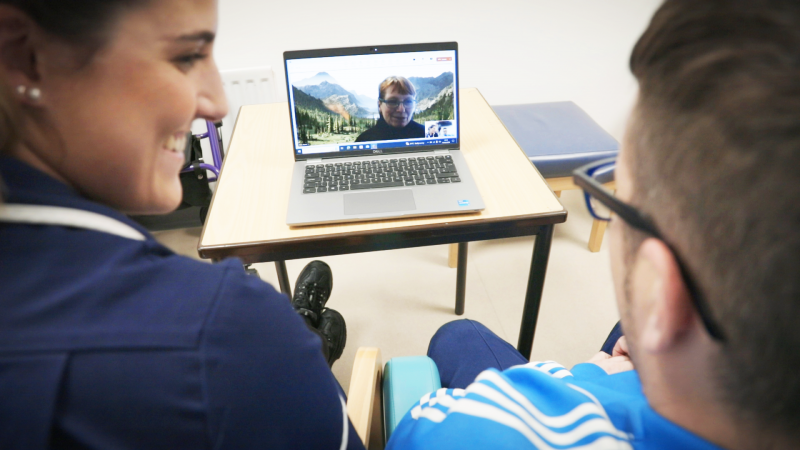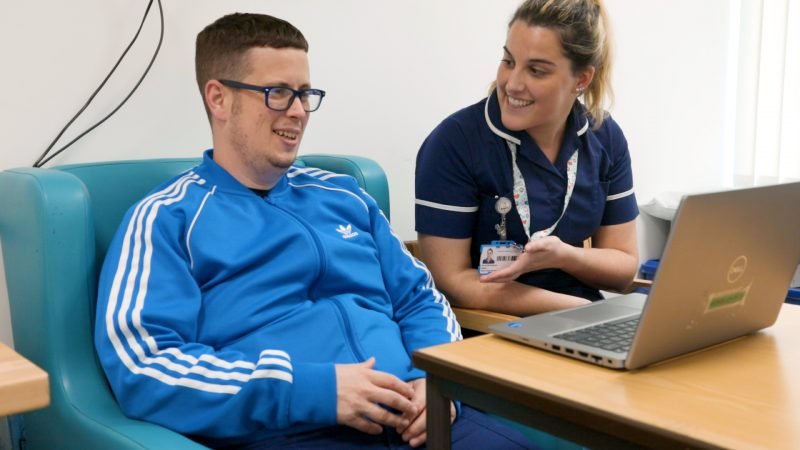Sometimes simple uses of digital technology can make a big difference to the patient experience writes Ward Manager Clare Garnett

Video calls allow a visual assessment of the patient
What is a Virtual Transfer of Care?
We are all aware of the pressure the hospital faces on a daily basis, and reducing the length of patient stay is one way to increase flow and relieve some pressure.
Taking advantage of easy-to-use technology to help patients return to their care homes more quickly is a simple way to reduce the amount of time patients stay in the hospital.
We call this process Virtual Transfer of Care (VTOC), and it is very simple and effective.
A Virtual Transfer of Care is when we make a video call using Microsoft Teams, to hand over a patient to nursing homes or care agencies once they are medically optimised for discharge.
Making a video call allows care home staff to talk to the patient and see how they mobilise, which makes for a more reliable handover as the care home staff can see for themselves that the patient is ready to come back.
Watch Clare Garnett demonstrate a virtual transfer of care
Benefits of the new approach
This new approach to handing over patients to care homes is replacing the old ways of working in out trust.
The previous method was to organise a physical visit by care home staff to the patient in hospital to assess their readiness to return.
The previous approach often led to delays as it could take a few days before a care home staff member was able to come to the hospital.
We also previously used telephone consultations, but these lacked the visibility that a video call gives, allowing a visual assessment of the patient.

A Virtual Transfer of Care in progress (patient portrayed by staff member)
Advantages for patients
The main benefit for patients with virtual transfers of care is that they frequently get home much sooner than they did previously.
We have noticed that patient stay can be reduced by days now that we do not have to wait for care home staff to physically come onsite.
Care home staff are also much happier because they save time and money on transport and parking at the hospital.
Improved flow
Virtual transfers of care definitely help improve patient flow and discharges.
If you manage to do the virtual transfer care before midday, then there is no reason why you cannot send the patient home that day, freeing up space for new patients.
It is also very simple and easy to set up and manage a virtual transfer of care.
All that staff need is a trust email address, and they can easily set up a Microsoft Teams calls with external partners.
We have been really pleased with the improvement of our handovers since adopting this new approach and are actively encouraging its use across the trust.
